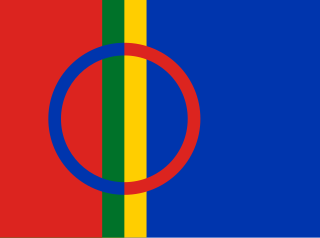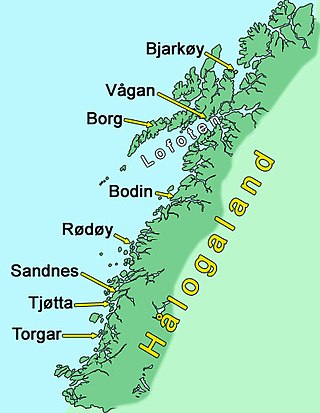Related Research Articles

The Baltic Sea is an arm of the Atlantic Ocean that is enclosed by Denmark, Estonia, Finland, Germany, Latvia, Lithuania, Poland, Russia, Sweden, and the North and Central European Plain.

The Scandinavian Peninsula is located in Northern Europe, and roughly comprises the mainlands of Sweden, Norway and the northwestern area of Finland.

Sápmi is the cultural region traditionally inhabited by the Sámi people. Sápmi is in Northern Europe and includes the northern parts of Fennoscandia, also known as the "Cap of the North".

The Swedes were a North Germanic tribe who inhabited Svealand in central Sweden and one of the progenitor groups of modern Swedes, along with Geats and Gutes. They had their tribal centre in Gamla Uppsala.

Germania, also called Magna Germania, Germania Libera, or Germanic Barbaricum to distinguish it from the Roman province of the same name, was a historical region in north-central Europe during the Roman era, which was associated by Roman authors with the Germanic people. The region stretched roughly from the Middle and Lower Rhine in the west to the Vistula in the east. It also extended at some point as far south as the Upper and Middle Danube and Pannonia, and to the known parts of southern Scandinavia in the north. Archaeologically, these people correspond roughly to the Roman Iron Age of those regions. While dominated by Germanic people, Magna Germania was also inhabited by a few other Indo-European people.

Pechenga is an urban locality in Pechengsky District, Murmansk Oblast, Russia. Municipally, it is incorporated as Pechenga Urban Settlement of Pechengsky Municipal District. Population: 3,188 (2010 Census); 2,959 (2002 Census); 2,671 (1989 Census).

The Sitones were a Germanic people living somewhere in Northern Europe in the first century CE. They are mentioned only by Cornelius Tacitus in 97 CE in Germania. Tacitus considered them similar to Suiones apart from one descriptor, namely that women were the ruling sex.
Upon the Suiones, border the people Sitones; and, agreeing with them in all other things, differ from them in one, that here the sovereignty is exercised by a woman. So notoriously do they degenerate not only from a state of liberty, but even below a state of bondage.

The Ynglings were a dynasty of kings, first in Sweden and later in Norway, primarily attested through the poem Ynglingatal. The dynasty also appears as Scylfings in Beowulf. When Beowulf and Ynglingatal were composed sometime in the eighth to tenth centuries, the respective scop and skald (poet) expected his audience to have a great deal of background information about these kings, which is shown in the allusiveness of the references.
Kvenland, known as Cwenland, Qwenland, Kænland, and similar terms in medieval sources, is an ancient name for an area in Fennoscandia and Scandinavia. Kvenland, in that or nearly that spelling, is known from an Old English account written in the 9th century, which used information provided by Norwegian adventurer and traveler Ohthere, and from Nordic sources, primarily Icelandic. A possible additional source was written in the modern-day area of Norway. All known Nordic sources date from the 12th and 13th centuries. Other possible references to Kvenland by other names and spellings are also discussed here.

Kvens are a Balto-Finnic ethnic minority in Norway. They are descended from Finnish peasants and fishermen who emigrated from the northern parts of Finland and Sweden to Northern Norway in the 18th and 19th centuries. In 1996, Kvens were granted minority status in Norway, and in 2005 the Kven language was recognized as a minority language in Norway.
Emund the Old or Edmund was King of Sweden from c. 1050 to c. 1060. His short reign was characterised by disputes with the Archbishopric of Bremen over church policies, and a historically debated delimitation of the Swedish-Danish border.

Bjarmaland was a territory mentioned in Norse sagas since the Viking Age and in geographical accounts until the 16th century. The term is usually seen to have referred to the southern shores of the White Sea and the basin of the Northern Dvina River as well as, presumably, some of the surrounding areas. Today, those territories comprise a part of the Arkhangelsk Oblast of Russia, as well as the Kola Peninsula.

Hålogaland was the northernmost of the Norwegian provinces in the medieval Norse sagas. In the early Viking Age, before Harald Fairhair, Hålogaland was a kingdom extending between the Namdalen valley in Trøndelag county and the Lyngen fjord in Troms county.
Faravid was a legendary King of Kvenland who is mentioned in the Icelandic Egils saga from the early 13th century. According to the saga, Faravid made an alliance with the Norwegian Thorolf Kveldulfsson to fight against Karelian invaders.

The Russo-Swedish War of 1495–1497, known in Sweden as the Stures' Russian War, was a border war which occurred between the Grand Duchy of Moscow and the Kingdom of Sweden. Although the war was relatively short, and did not lead to any territorial changes, it has significance as the first war between Sweden and Moscow. Sweden earlier fought wars against the Novgorod Republic, before Novgorod was formally annexed to Moscow in 1478.
A few Icelandic sagas tell about kings that ruled in Kvenland.
The origin of the name Kven is unclear. The name appears for the first time in a 9th-century Old English version, written by King Alfred of Wessex, of a work by the Roman author Orosius, in the plural form Cwenas.

There are scattered descriptions of early Finnish wars, conflicts involving the Finnish tribes, some of which took place before the Middle Ages. The earliest historical accounts of conflicts involving Finnish tribes, such as Tavastians, Karelians, Finns proper and Kvens, have survived in Icelandic sagas and in German, Norwegian, Danish and Russian chronicles as well as in Swedish legends and in Birch bark manuscripts. The most important sources are Novgorod First Chronicle, Primary Chronicle and Eric Chronicles.
Norway has two official names: Norge in Bokmål and Noreg in Nynorsk. The English name Norway comes from the Old English word Norþweg mentioned in 880, meaning "northern way" or "way leading to the north", which is how the Anglo-Saxons referred to the coastline of Atlantic Norway similar to leading theory about the origin of the Norwegian language name. The Anglo-Saxons of Britain also referred to the kingdom of Norway in 880 as Norðmanna land.

Ancient kings of Finland are kings of Finland mentioned in early historical sources. The word kuningas is an old Finnic word deriving from the ancient Germanic word kuningaz. In the time the sources were written, "Finland" mainly referred to the Finland Proper area, and depending on the source, the "kings of Finland" could also refer to kings of the Sami people.
References
- ↑ Bryn, Halfdan (1922). Troms fylkes antropologi. Kristiania. p. 5.
{{cite book}}: CS1 maint: location missing publisher (link) - ↑ Geography of Alfred
- ↑ Orkneyinga saga. Original text here Archived 2007-05-08 at the National and University Library of Iceland .
- ↑ Nöteborgsfreden och Finlands medeltida östgräns. Andra delen. Skrifter utgivna av Svenska litteratursällskapet i Finland, Nr 427:2, VIII + s. 239-509. Helsingfors 1991. (97:1, 186-200). More about Russian border documentation between the 14th and 16th centuries.
- ↑ Julku, Kyösti. Kvenland - Kainuunmaa (1986). See page 95.